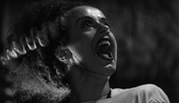Essay Quick Links
Course Information

Instructor: K. Gillis-Bridges
Class: MW, 12:30-1:50 p.m.
Rooms: Mary Gates 082A/082
Office:
Padelford A-105
Hours: MW 11 a.m.-12 p.m.
Phone/Voice: 206.543.4892
Email: kgb@u
Essay 1
Length and Due Dates
Length: 1,000 words, formatted as described in the “Essays” portion of the syllabus
First Draft Due: Wednesday, October 8, at beginning of class; bring in two electronic formats
Final Draft Due: Wednesday, October 15, at beginning of class; bring in two electronic formats
::Top::
Assignment: Scene Analysis
For this assignment, you will analyze a single scene from Dracula or The Phantom of the Opera, making an argument about how the scene’s formal elements (mise-en-scene, cinematography, editing) function to develop characters and the relationships between them, delineate settings, organize plot, convey themes or communicate meaning. You may select from the following list of scenes:
| Dracula | The Phantom of the Opera |
|
|
::Top::
Guidelines and Expectations
1. The key to the scene analysis assignment is focus. You will need to concentrate on how one or two formal elements perform one or two functions. A successful essay will pose a clear, defendable argument regarding the function of the scene’s formal elements and develop that argument over the course of the essay. Rather than offering a catalogue of your observations on the scene’s formal elements, the essay will make an argument about the function of selected elements.
2. Remember that you are writing to an audience who has viewed the films and completed the readings. Therefore, you do not need to summarize the film’s plot, nor do you need to define film terms. Instead, you should incorporate summary, paraphrase, quotation, or description of images into an analysis. Each reference to the film should support your argument.
3. You may incorporate screen shots into your analysis. However, you must explicate the image within the body of the essay rather than using screen shots as decorations. Identify and discuss the visual details that illustrate your claim about the scene’s formal elements. When using screen shots, caption each image (for example, “Figure 1: Van Helsing gazes at Dracula”) and reference the figure number in your text (for example, “Van Helsing wears spectacles, a prop that suggests he alone recognizes Dracula’s monstrous identity (see Figure 1)”).
4. You should not use outside sources to compose your essay. Focus on your interpretation of the scene, drawing on selections from the Comparative Literature 272 packet as they support your argument. If you quote, summarize, or paraphrase a course text, use MLA parenthetical format to cite your source and include a Works Cited list.
5. Do not forget the rich discussion that has taken place in class and on the electronic posting board. A review of your notes and the postings on a particular film may help you to ask key questions and shape your analysis.
6. When describing a film's plot or stylistic techniques, use the present tense (for example, ""Mina gazes hungrily at John’s neck as the pair sits on the balcony," or "the shot reveals Christine’s horrified reaction to the unmasked Phantom”).
7. Clips of all scenes for analysis are available online and on our shared drive in the computer lab. You may access our class “Clips” folder during public hours in Mary Gates 076. You may also access clips via the online clips page.
8. If you're having difficulty devising an approach to the essay, or if you want to discuss ideas-in-progress, come to my office hours or email me to set up an appointment.
::Top::
Grading
I will use an eighty-point grading rubric to evaluate the scene analysis. Failure to submit an essay draft will result in a 20-point deduction from the final grade, as revising from feedback constitutes an essential part of the essay assignment. Late essay revisions will receive a 10-point deduction per day late, including weekends and holidays. I will make exceptions to the lateness policy only in cases of documented illness or family emergency. Please remember that technology glitches do not constitute valid excuses for lateness.
::Top::